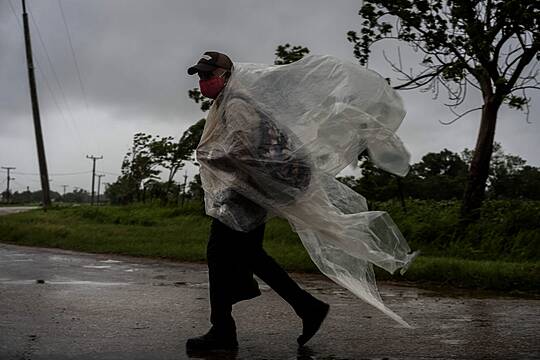Residents across Louisiana’s coast are preparing for the potentially “life-altering” Hurricane Ida, which is expected to bring winds as high as 140mph when it slams ashore.
A combination of voluntary and mandatory evacuations have been called in cities and communities across the region including New Orleans, where the mayor ordered a mandatory evacuation for areas outside the city’s levee system and a voluntary evacuation for residents inside it.
But since the storm quickly escalated in intensity, mayor LaToya Cantrell said it was not possible to order a mandatory evacuation for the entire city, which would require using all lanes of some major roads in order for everyone to leave.
8/27 - 10 PM CDT - Here are the latest key messages from the National Hurricane Center on Hurricane Ida. pic.twitter.com/A5kGkeFPMl
— NWS Southern Region (@NWSSouthern) August 28, 2021
Advertisement
The storm is expected to make landfall on the exact date Hurricane Katrina devastated a large part of the Gulf Coast 16 years earlier.
But whereas Katrina was a Category 3 when it made landfall south-west of New Orleans, Ida is expected to reach an extremely dangerous Category 4 hurricane, with top winds of 140mph before making landfall likely west of New Orleans late on Sunday.
“This will be a life-altering storm for those who aren’t prepared,” US National Weather Service meteorologist Benjamin Schott said.
Ida intensified rapidly on Friday from a tropical storm to a hurricane with top winds of 80mph as it crossed western Cuba.

It is expected to pick up steam when it goes over the warm waters of the Gulf of Mexico.
In New Orleans, city officials said residents need to be prepared for prolonged power outages, and asked elderly residents to consider evacuating.
Collin Arnold, the city’s emergency management director, said the city could be under high winds for about 10 hours.
Earlier, Ms Cantrell called for a mandatory evacuation for residents outside the city’s levee protections – a relatively small sliver of the city’s population.
With the storm’s forward speed slowing down and the intensity picking up, the storm surge may overtop some levees that protect parts of New Orleans on the west bank of the Mississippi River, said Heath Jones, the emergency manager of the Army Corps of Engineers’ New Orleans District.

However, he said they are designed to be overtopped and have protections in place to prevent more damage.
There does not appear to be any danger of storm surge coming over the levees that protect the city’s east bank, which makes up most of the city, he said.
Across the region, residents were filling sandbags, getting gas for cars and generators and stocking up on food. Capt Ross Eichorn, a fishing guide on the coast about 70 miles south-west of New Orleans, said he fears warm Gulf waters will “make a monster” out of Ida.
“With a direct hit, ain’t no telling what’s going to be left – if anything,” Mr Eichorn said.
He added: “Anybody that isn’t concerned has got something wrong with them.”







